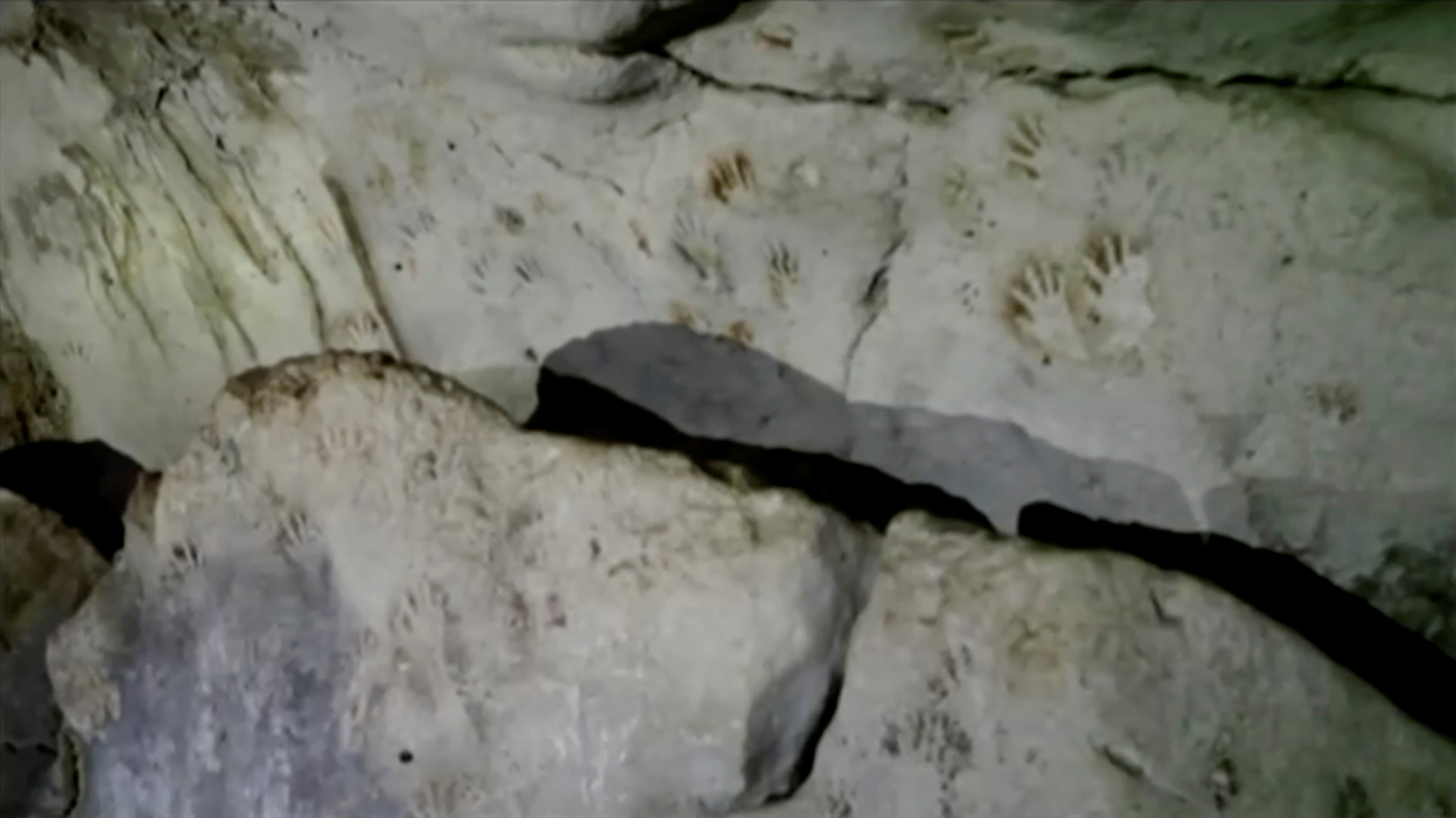Ancient Mayan cave reveals mysterious red and black handprints
There are 137 prints in total, thought to be more than 1,200 years old

Your support helps us to tell the story
From reproductive rights to climate change to Big Tech, The Independent is on the ground when the story is developing. Whether it's investigating the financials of Elon Musk's pro-Trump PAC or producing our latest documentary, 'The A Word', which shines a light on the American women fighting for reproductive rights, we know how important it is to parse out the facts from the messaging.
At such a critical moment in US history, we need reporters on the ground. Your donation allows us to keep sending journalists to speak to both sides of the story.
The Independent is trusted by Americans across the entire political spectrum. And unlike many other quality news outlets, we choose not to lock Americans out of our reporting and analysis with paywalls. We believe quality journalism should be available to everyone, paid for by those who can afford it.
Your support makes all the difference.Over 100 handprints covering the walls of a cave in Mexico are associated with an ancient Mayan coming-of-age ritual, according to an archaeologist who has explored the site.
In total there are 137 red and black prints, thought to be over 1,200 years old and mostly made by the hands of children. Their age would date them to near the end of the ancient Maya’s classical zenith. During this time major cities across southern Mexico and Central America thrived with particularly notable achievements in maths and art.
The cavern can be found under a large ceiba tree, which the Maya considered sacred, some 33 feet (10 metres) below ground. It is located near the northern tip of Mexico’s Yucatan peninsula, where the towering pyramids of urban centres like Uxmal and Chichen Itza can still be seen.
An analysis of the handprints has led archaeologist Sergio Grosjean to believe that they were likely made by children as they began to reach puberty. He added that the colours of the handprints could provide clues as to what they were there for.
“They imprinted their hands on the walls in black... which symbolized death, but that didn’t mean they were going to be killed, but rather death from a ritual perspective,” he explained.
He added: “Afterwards, these children imprinted their hands in red, which was a reference to war or life.”
As well as the handprints, a carved face and six painted relief sculptures were discovered in the cave. These date from between 800-1,000 AD, a period when severe drought struck the region which is thought to have contributed to the classical Maya’s sudden abandonment of their cities.
Although the first Mayan settlements date back almost 4,000 years, large centres of Mayan people could still be found in the early 1500s, when Spanish conquerors arrived in the country.
Indeed, to this day several million Maya continue to live in communities across southeastern Mexican states. These include areas such as Chiapas and Campeche, as well as in other Central American countries including Guatemala and Belize.
Additional reporting by Thomson Reuters Foundation
Join our commenting forum
Join thought-provoking conversations, follow other Independent readers and see their replies
Comments